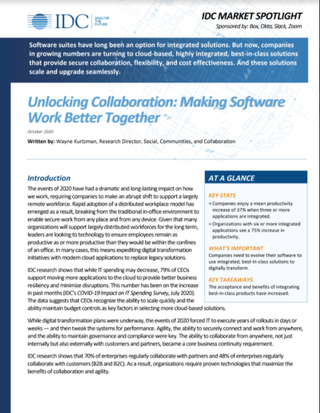Why IT projects fail and how to make yours a success
IT projects often run into trouble and have to be abandoned, but organisations can take steps to avoid common pitfalls

IT projects fail all the time. McKinsey has found that somewhere between 25% and 40% of projects exceed their budget or schedules by more than 50%, and that 70% of complex, large-scale change programmes don’t reach their stated goals. What’s going on, and how do you avoid being in the majority?
There are some common reasons IT projects fail that are as relevant to small companies with a handful of employees as they are to large international mega-corporations. Anyone starting an IT project, whatever its size and scope, from a full digital transformation exercise to bringing digital resources into just one area of the business, should be aware of these, and refer to them regularly to make sure they’re not about to make the same mistakes.
Skills, skills, skills
When there is an absence of key skills to generate the desired outcomes, a project will be in trouble. When thinking about knowledge and expertise, you should look across different aspects of the project and different parts of the organisation. It’s also important to remember not all of the skills required will be technical ones.
Internally, an organisation needs process management and managerial skills to ensure implementation is smooth. Often the talk here is about project management – and that is part of it – but soft skills are needed too. The board of directors must take the task of creating buy-in seriously and champion a project through its development and after its implementation as it beds in and people get used to new work practices.
Managers need to be able to understand the changes and bring their teams with them. Some of their roles will be technical, some will be ‘people skills’.
Consultants, internal and external technical teams, implementation partners or others need to be fully able to turn an organisation’s ideas into reality. This means among other things helping with the vision, being a ‘critical friend’ and suggesting different approaches where these seem relevant, at all times ensuring they work within, and not against, the organisational culture. The best organisational change, technical or not, is done with people, not to people.
Scoping and planning is key, and this involves a range of skills both internal and external. This is not a one-time activity, though, as Hans Tesselaar, executive director at the Banking Industry Architecture Network (BIAN) explains. He says projects need clear and defined end goals from the outset, but that these can develop over time, and that projects teams should be given “an opportunity to re-scope the project in some capacity without losing track”.
Get the ITPro. daily newsletter
Receive our latest news, industry updates, featured resources and more. Sign up today to receive our FREE report on AI cyber crime & security - newly updated for 2024.
Pauses help with scoping and finance
A project can’t be allowed to run out of money, but keeping tabs on finances can be a challenge. Building a budget for a project can be difficult as there are many elements to consider, including some that won’t become apparent until work is already well underway. Including contingencies and undertaking re-evaluation at very regular intervals are crucial. Otherwise, by the time a budget line is raising red flags, it might be too late to save the project.
One strategy to ensure a project stays on budget and within its original scope is to build in deliberate pauses. Pausing and stepping back to re-evaluate doesn’t have to wait until issues are identified – indeed by then getting back on track can be time-consuming and expensive.
Regular pre-set pauses where all involved can take a moment to breathe and think can be really valuable. ‘Function creep’ is a real and present danger in any project, and it can happen without being noticed as someone adds a small tweak here, another tweak there. Tessellaar tells IT Pro: “Often, when a group is in the middle of a project, they may lose track of their original goals or plan … pauses become necessary to take a step back and rethink the process.”

Unlocking collaboration: Making software work better together
How to improve collaboration and agility with the right tech
Three golden rules
With lots of people involved in a project, external contractors who may well be new to an organisation and its culture, and people pulling in different – maybe even conflicting – directions, the stresses on any IT project can be significant.
Project management in its process-focused form is not enough to avoid the traps. Tessellaar suggests project managers keep three things in mind: “Focus - stay as close as possible to the original objectives. Communication - ensure all project members and stakeholders are extremely well informed on a day-to-day basis. Craftsmanship - ensure you have the right skills and competencies in the project.”

Sandra Vogel is a freelance journalist with decades of experience in long-form and explainer content, research papers, case studies, white papers, blogs, books, and hardware reviews. She has contributed to ZDNet, national newspapers and many of the best known technology web sites.
At ITPro, Sandra has contributed articles on artificial intelligence (AI), measures that can be taken to cope with inflation, the telecoms industry, risk management, and C-suite strategies. In the past, Sandra also contributed handset reviews for ITPro and has written for the brand for more than 13 years in total.




